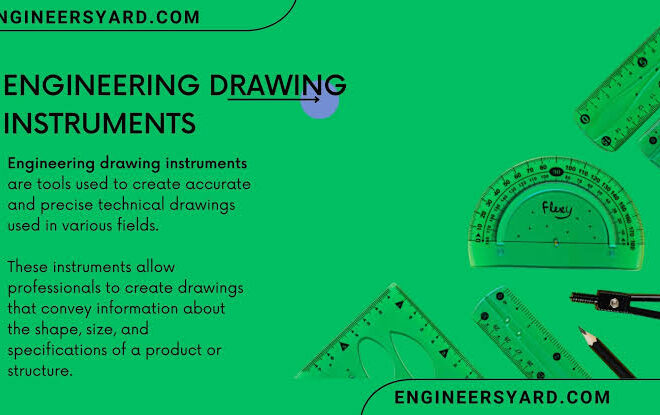- Class: Primary 6
- Term: 1st Term
- Week: 7
- Age: 11 years
- Duration: 40 minutes
- Subject: Basic Science And Technology
- Curriculum Theme: Basic Technology
- Previous Lesson: Drawing Instruments
- Topic: Drawing Instruments And Their Uses
- Content: Uses Of Drawing Instruments
Performance Objectives:
By the end of the lesson, pupils should be able to:
- Cognitive Domain: Identify six drawing instruments and explain their uses.
- Affective Domain: Demonstrate appreciation for the importance of precision in technical drawings.
- Psychomotor Domain: Properly handle and use drawing instruments to draw basic shapes.
- Social Domain: Work collaboratively in groups to discuss the importance of each drawing instrument.
Reference Materials:
The following resources were used in planning this lesson:
- 9 – Years Basic Education Curriculum
- Abuja Educational Resource Centre Scheme of work
- NAPPS National Unified Scheme of Work
- Online Information from Civiconcepts – Drawing Instruments And Their Uses
- Relevant Textbooks
- Online Information From (https://civiconcepts.com/blog/engineering-drawing-instruments)
Instructional Materials:
The teacher will teach this lesson with the aid of:
- A set of drawing instruments (e.g., rulers, compasses, protractors)
- Large chart showing different drawing instruments and their uses
- Whiteboard and markers
- Sample technical drawing
Rationale for the Lesson:
Understanding drawing instruments is essential for pupils, as it forms the foundation for technical drawing skills. These instruments are critical in achieving precision and accuracy in design and engineering, which are important in various fields of study and professions.
Prerequisite/Previous Knowledge:
Pupils are familiar with basic shapes and have previously been introduced to drawing instruments.
INSTRUCTIONAL PROCEDURES:
Learning Area: Drawing Instruments And Their Uses
To deliver this lesson, the teacher will adopt the following steps:
| Content Development | Time | Teaching Method | Teaching Strategy | Teacher’s Activity | Pupils’ Activity | Learning Point |
|---|---|---|---|---|---|---|
| Step 1: Introduction | 5 minutes | Discussion | Set Induction | Introduces the lesson by showing actual drawing instruments and asking pupils about their prior knowledge. | Pupils respond by sharing what they know about drawing instruments. | Pupils are engaged and curious about drawing instruments. |
| Step 2: Identification of Instruments | 10 minutes | Demonstration | Direct Instruction | Shows and names six drawing instruments, explaining the purpose of each one. | Pupils observe the instruments and note down their names. | Pupils can identify and name different drawing instruments. |
| Step 3: Explanation of Uses | 10 minutes | Explanation | Guided Discovery | Explains the specific uses of each instrument and demonstrates how they are used. | Pupils watch the demonstration and ask questions for clarification. | Pupils understand the uses of different drawing instruments. |
| Step 4: Hands-On Practice | 10 minutes | Practical Activity | Group Work | Guides pupils to use drawing instruments in groups to draw basic shapes. | Pupils practice using the instruments to create simple drawings. | Pupils gain practical experience in using drawing instruments. |
| Step 5: Note Taking | 5 minutes | Notetaking | Reinforcement | Dictates key points for pupils to write down in their notebooks. | Pupils write down the notes as instructed. | Pupils consolidate their learning by taking notes. |
| Step 6: Evaluation | 5 minutes | Questioning | Assessment | Asks questions to evaluate pupils’ understanding of the lesson. | Pupils answer questions and participate in the review session. | Pupils demonstrate comprehension of the lesson content. |
| Step 7: Conclusion | 5 minutes | Summary | Consolidation | Recaps the lesson and emphasizes the importance of each drawing instrument. | Pupils listen and ask final questions if any. | Pupils leave the lesson with a clear understanding of the topic. |
Lesson Content
Drawing Instruments And Their Uses
Below are some drawing instruments and their uses:
- Ruler: Used to measure and draw straight lines.
- Compass: Used to draw circles and arcs.
- Protractor: Used to measure and draw angles.
- Set Squares: Used to draw perpendicular and parallel lines.
- Dividers: Used to transfer measurements from one part of a drawing to another.
- French Curve: Used to draw smooth curves.
These instruments help in creating precise and accurate technical drawings, which are crucial in fields such as engineering and architecture.
Lesson Evaluation:
To evaluate the learning, the teacher asks pupils to:
- Name and describe the use of any three drawing instruments.
- Demonstrate how to use a ruler and compass to draw a simple shape.
- Explain why accuracy is important in technical drawing.
- Work in pairs to identify instruments used in a given technical drawing.

